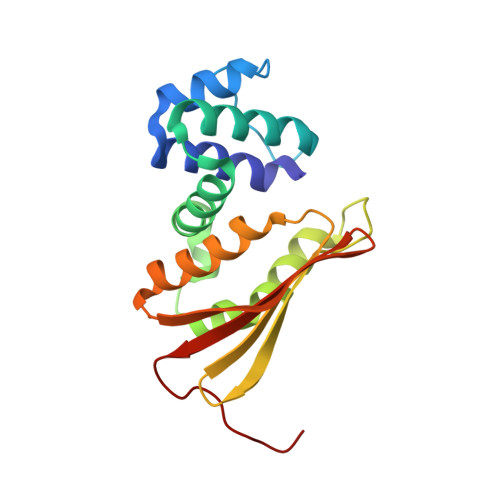Modulating heme redox potential through protein-induced porphyrin distortion.
Olea, C., Kuriyan, J., Marletta, M.A.(2010) J Am Chem Soc 132: 12794-12795
- PubMed: 20735135
- DOI: https://doi.org/10.1021/ja106252b
- Primary Citation of Related Structures:
3NVR, 3NVU - PubMed Abstract:
Hemoproteins are ubiquitous in biology and are commonly involved in critical processes such as electron transfer, oxidative phosphorylation, and signal transduction. Both the protein environment and the heme cofactor contribute to generate the range of chemical properties needed for these diverse functions. Using the heme nitric oxide/oxygen binding (H-NOX) protein from the thermophilic bacterium Thermoanaerobacter tengcongensis, we have shown that heme electronic properties can be modulated by porphyrin distortion within the same protein scaffold without changing the heme ligation state or heme environment. The degree of heme distortion was found to be directly correlated to the electron density at the heme iron, as evidenced by dramatic changes in the heme redox potential and pK(a) of the distal ligand ((-)OH vs H(2)O). Protein-induced porphyrin distortion represents a new strategy to rationally tune the electronic properties of protein-bound porphyrins and could be used to engineer proteins with desired reactivity or functionality.
Organizational Affiliation:
Department of Molecular and Cell Biology, California Institute for Quantitative Biosciences, and Division of Physical Biosciences, University of California, Berkeley, Berkeley, California 94720-3220, USA.

















